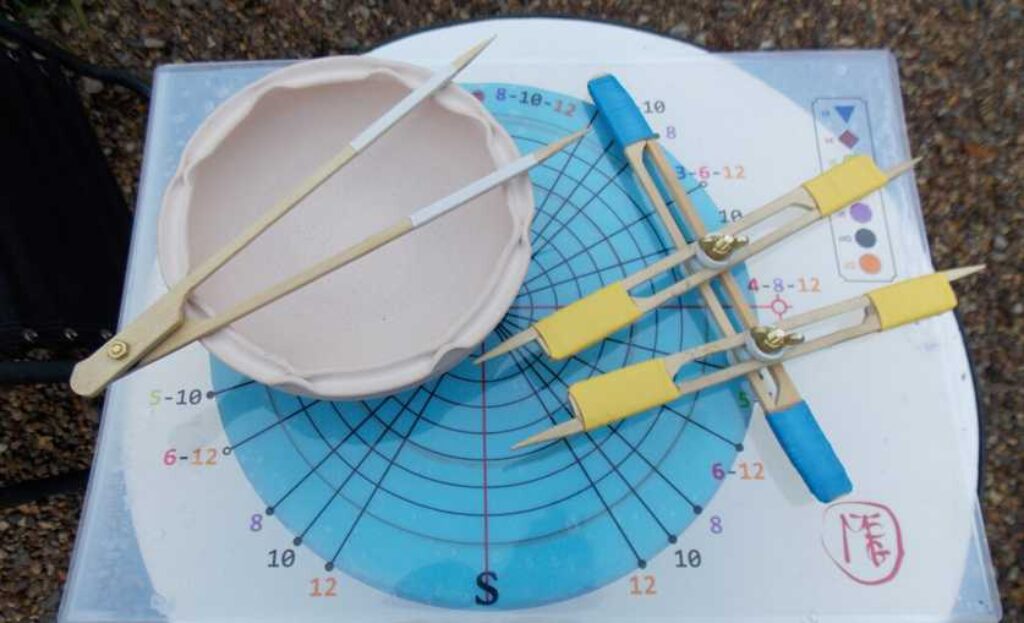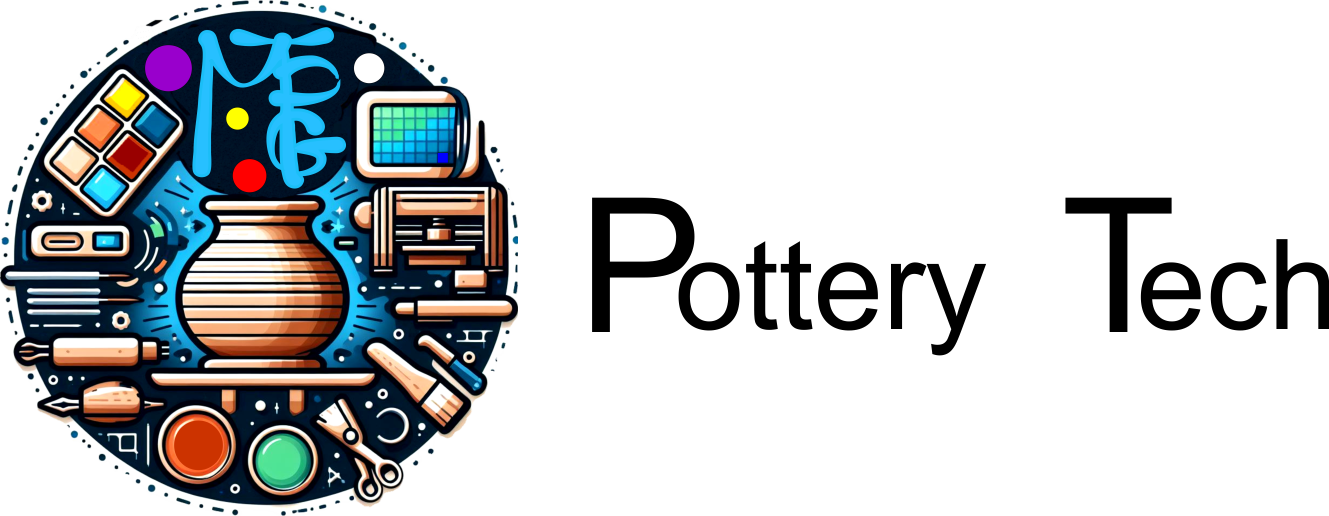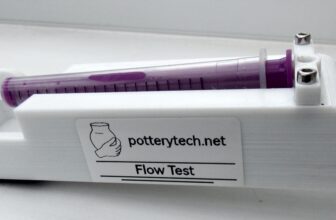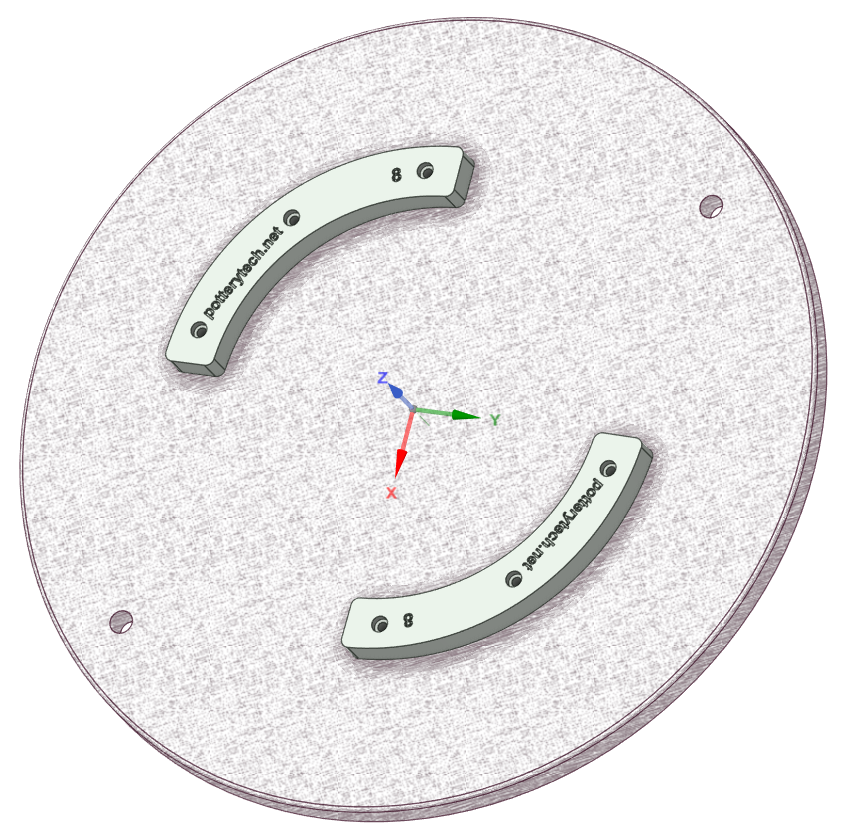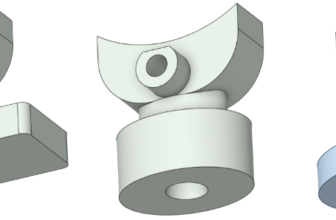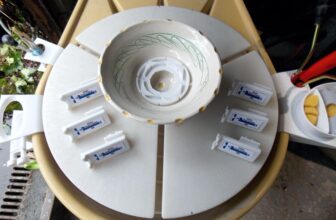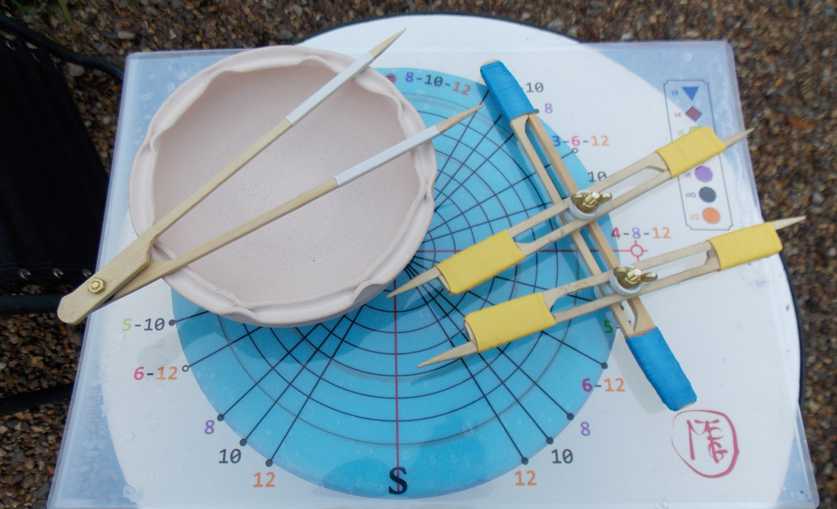
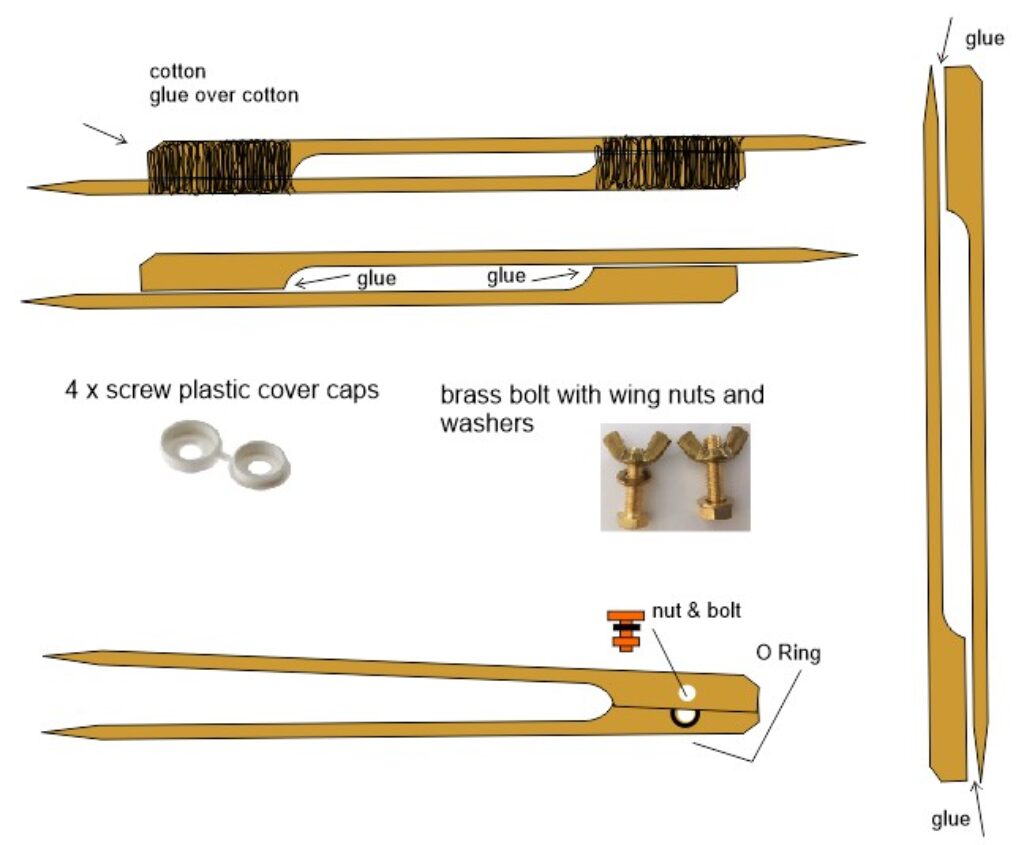
Creating a pair of calipers is quite straightforward; all you require are a couple of bamboo meat skewers, along with a nut, a bolt, and a small O-ring.
Assembly Instructions
First, drill a hole through both bamboo skewers. Then, join them together utilizing the nut and bolt, and add the O-ring to complete the assembly.
Sophisticated dividers
By utilizing bamboo skirt skewers, it’s possible to create more sophisticated dividers. To construct these advanced dividers, you will require a total of six bamboo skewers, along with cotton and waterproof glue; I personally used PVA glue for this assembly process. The first step involves gluing two bamboo skewers together, as illustrated in the accompanying diagram. Once the glue has dried, take some cotton and wrap it around the ends that were glued, applying PVA glue with each layer you add.
After completing this wrapping process, the next step is to connect the skewers using two brass nuts and bolts, along with a plastic screw cap cover. It is important to note that the upper part of the plastic fitting is unnecessary, so you can trim that section off. For additional durability, you may also choose to use heat shrink tubing on the ends of the dividers.
Creating your own tools for ceramics can be a highly fulfilling offering both practicality and personal satisfaction.
Another handy tool is a device that assists in marking and dividing your handmade pottery. While there are many tools available for purchase, I preferred to design one that I could print on a sheet of waterproof inkjet transparency.
I launched my CorelDRAW software to create lines suitable for marking segments on your ceramic clay creations or dividing patterns on your fired pottery. Once I completed the design, I converted the artwork into a PDF format and provided a download link on my website.
To print this design using an inkjet printer, I used a film known as CS-IJF, which is optimal for printing negatives for circuit boards, but can also be utilized for producing positives for various purposes. This transparency is treated with a special coating that enhances its effectiveness for this type of application, particularly making the black areas more opaque.
For increased durability of this template, I suggest using a laminating machine to achieve the best results. When laminating transparencies, it’s advisable to place your laminating pouch between two pieces of card to shield the transparency from excessive heat and prevent it from wrinkling.
https://www.weather-above.com/clay_template%201.pdf